-
ABOUT US
-
ACADEMICS
Curriculum Program
Departments
- English
- High School Chinese
- Primary and Junior School Chinese.
- High School Mathematics
- Middle School Mathematics
- Primary School Mathematics
- Music and Fine Arts
- Physical Education
- Physics
- Chemistry
- History and Geography
- Physical Science and Optional courses Department
- Middle School Biology
- High School Biology
- Social Sciences
- Computer Science
- Courses in Primary School
Achievements and Matriculations
College Counseling
Science & Technology Innovation Contest
Subject Competition
-
ARTS
-
ATHLETICS
-
AT SHSID
SHSID ∣ TIMES
PTSA
Club Exhibition
- 龙吟社
- Live 2 Drama
- Choir
- Hip-pop Dance Club
- The Primary School Dance Troupe
- Symposiums Club
- Biology Workshop
- You Shan
- VEX Robotic
- Peking Opera Club
- Baseball Club
- Model United Nations
- The World Scholar’s Cup
- Future Problem Solving Club
- United States Academic Pentathlon
- OM Club
- AMC Club
- Music for Patients
- SHSID Gazette
- Smile Charity
- Cultural Moments
- SciAcademy
- Stem Doge Alliance
- Chinese Debate Club
- IAA
- Mock Trial Club
- Zhengming Club
- Furry Friends
- GT-Racing
- Village Radio
- IMMC Club
- Creative Design and Intelligent Fabrication
- Future City Research Project
- ECOCAP
- AdvocaSEA
- SPDC
- Medishine
- Floorball Club
- Animusic MTC
- Wings Up
- All Booked
Health and Wellness
Campus Safety
Cafeteria Service
-
ADMINISTRATION
-
ADMISSIONS
-
ALUMNI
Alumni Information
Honors Students
- Class of 2025
- Class of 2024
- Class of 2023
- Class of 2022
- Class of 2021
- Class of 2020
- Class of 2019
- Class of 2018
- Class of 2017
- Class of 2016
- Class of 2015
- Class of 2014
- Class of 2013
- Class of 2012
- Class of 2011
- Class of 2010
- Class of 2009
- Class of 2008
- Class of 2007
- Class of 2006
Who Studied at SHSID
SHS Foundation
-
DOCUMENTS
Pu Xi Campus G1-3 | Home-School Collaboration, Building the Path to Growth
The cultivation of an excellent student cannot be achieved without strong home-school collaboration. In order to enhance communication between home and school, increase parents' understanding of the school's teaching philosophy, and promote joint parenting, the Puxi Campus held parent-teacher meetings for grades 1-3.
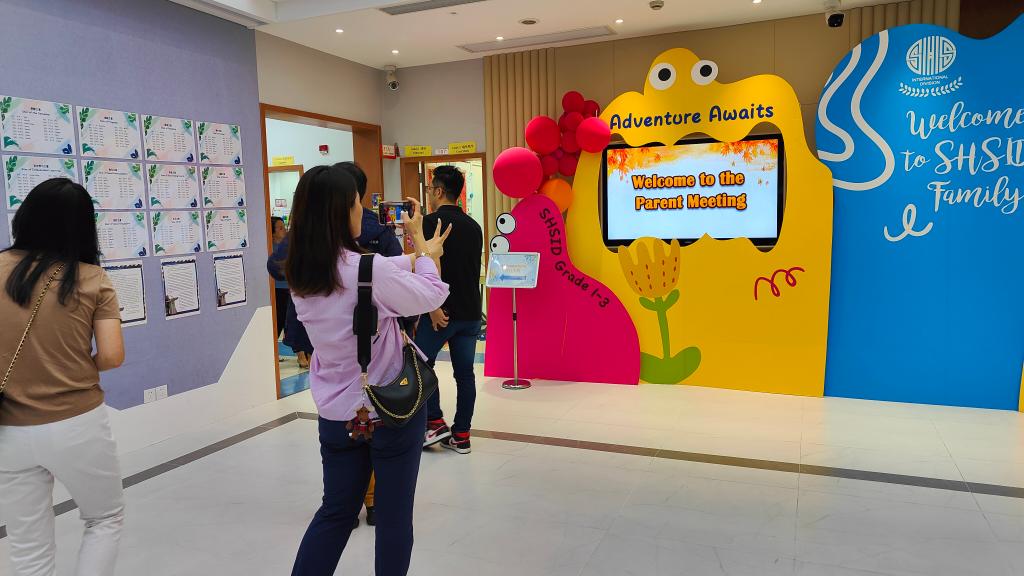
【Grade 1】
On the afternoon of September 21st, the first-grade class held its parent-teacher meeting. Teachers prepared a special task for the parents, asking them to draw their child in their mind and write a few encouraging words. After a while, adorable little figures shown on paper, some with cute little braids and others waving their favorite toys. The heartwarming words written by parents moved everyone, filling the classroom with warmth and love.
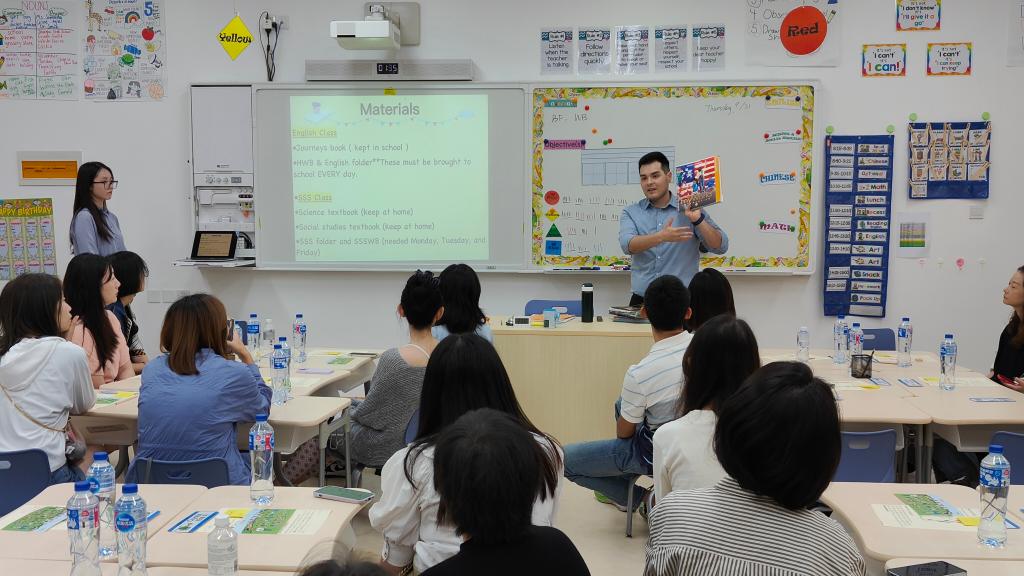
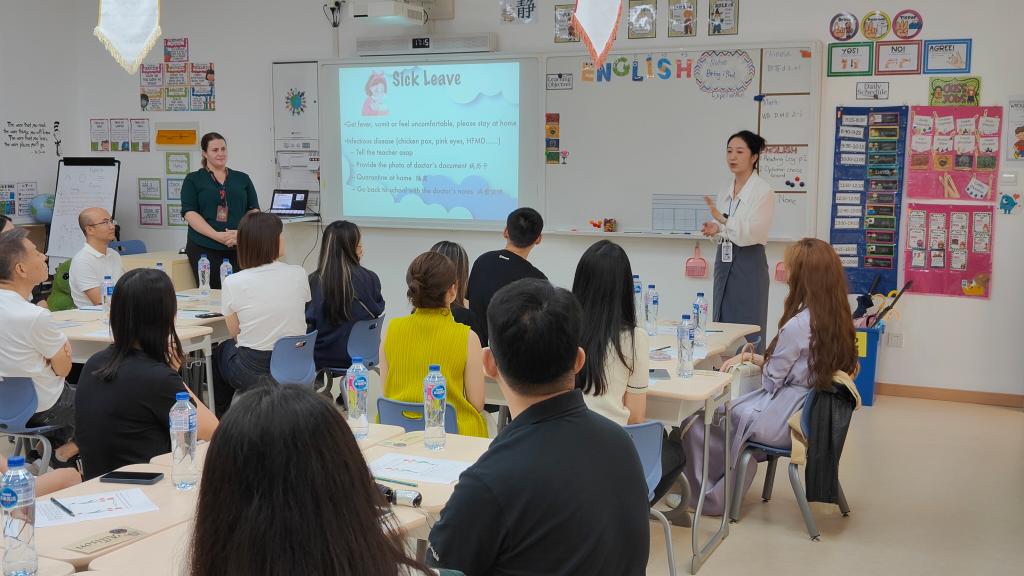
At 5 p.m. , the parent-teacher meeting officially began. The two homeroom teachers shared the rapid growth of the children in the three weeks since school started — Their daily lives at school, and their love and expectations of primary school life. They also provided detailed explanations about the school's educational philosophy, curriculum, and the cultivation of daily behavioral habits. Finally, the two homeroom teachers elaborated on the main subjects, covering teaching content, curriculum requirements, and homework. At the same time, they offered parents some practical tips for habit development, encouraging them to communicate with their children, listen to their thoughts, and positively guide them through any emotional issues.
Parents expressed their gratitude for the detailed and thoughtful information provided by the teachers and found the advice practical and considerate. They felt reassured and confident about being good role models for their children to help them make a smooth transition to primary school life.
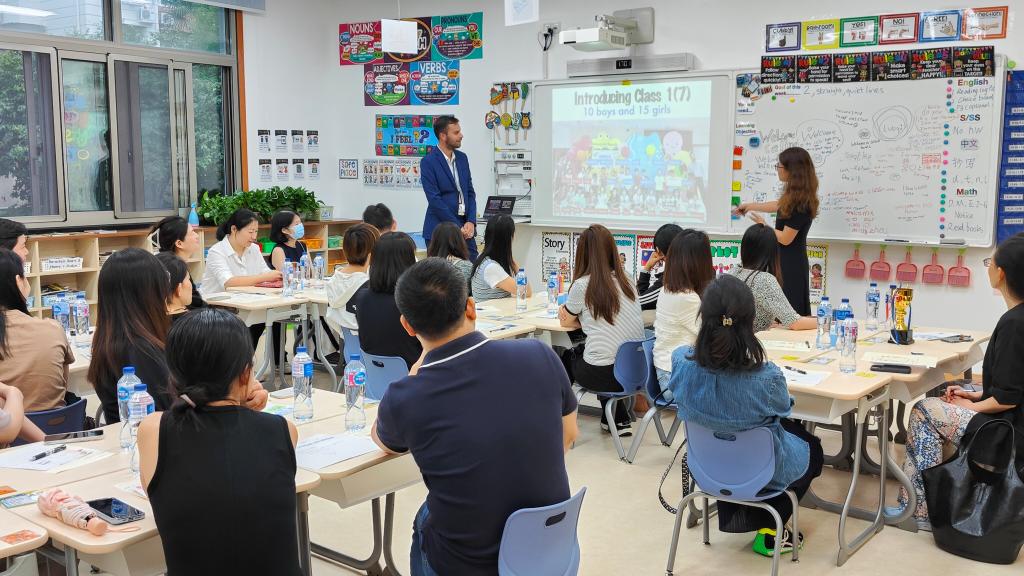
【Grade 2】
On September 26th, the second grade held the parent-teacher meeting. The second grade is a crucial period for developing learning habits and establishing routines. Therefore, in addition to introducing the characteristics of each subject and teaching content, teachers also emphasized the good habits emphasized in various subjects, such as reading habits, expression habits, listening habits, and more. They also synchronized the midterm goals and plans that the children have set at school. This collaboration between parents and teachers aims to drive the achievement of these small goals.
In addition, each class teacher introduced the core values of the character education program for this grade level, known as "HEROES." Each letter in "HEROES" represents an excellent quality, which includes "Honesty""Encouragement""Respect""Organization""Enthusiasm" and "Sharing." Teachers will work together with parents to encourage children to become practitioners of these heroic qualities and use their own strength to change themselves and the world.
Of course, on the journey to "HEROES", there is also a need for a "visualized" growth record, which brings us to the second grade's classroom management system - Class Dojo. The students' good behavior, classroom habits, and even everyday acts of kindness are all converted into Dojo points. On the other hand, teachers also use the Dojo system to record areas where they need improvement. Over time, as the children accumulate these points, their "growth value" continues to rise. They can use these points to "purchase" privileges such as selecting seats or changing classroom roles, enjoying the rewards of their hard work.
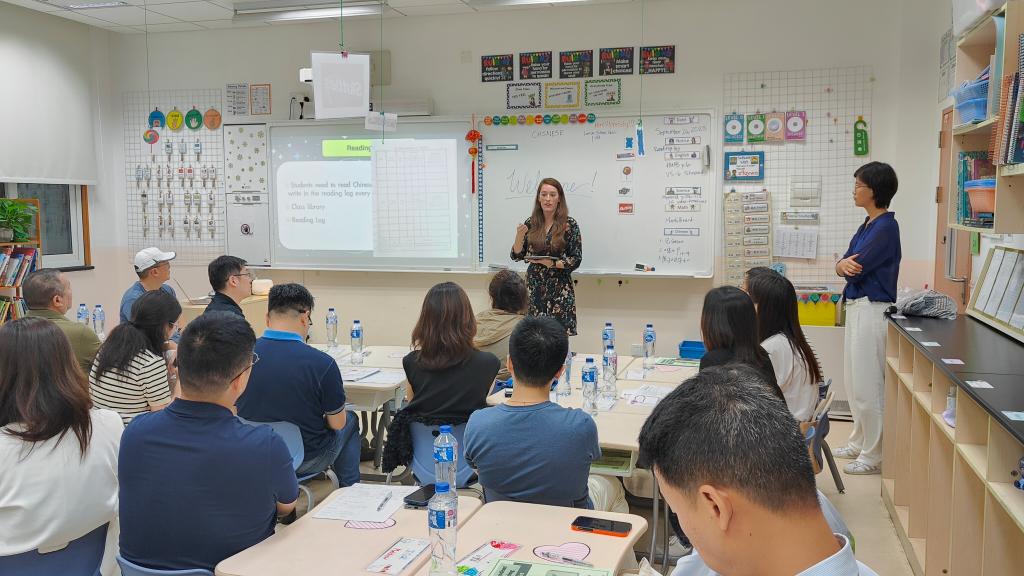
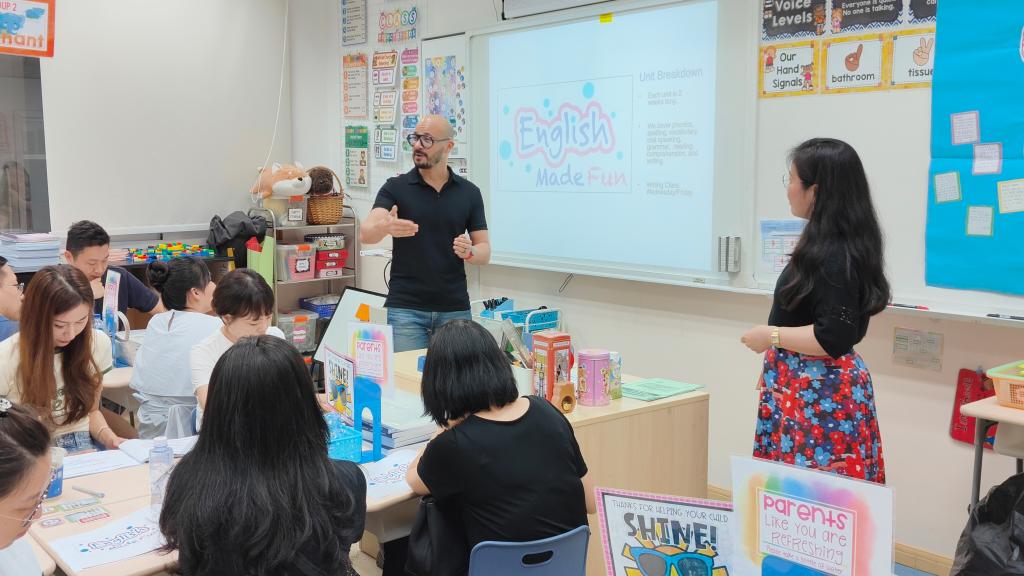
【Grade 3】
As an important turning point in students' learning journey, the 3rd grade is widely regarded as a transitional period. During the 3rd-grade parent-teacher conference, teachers primarily introduced parents to the newly defined "HEROES" values: "Helpfulness""Empathy""Responsibility""Optimism""Effort" and "Self-management." The new character education goals not only bring a sense of novelty to students but also set higher expectations for them.
In addition, teachers also explained to parents what SMART goals are and how to establish midterm objectives and plans. By setting clear goals, children will be more motivated and have a sense of direction in their progress. Teachers emphasized that while students are setting goals, they are also developing skills in self-management, self-assessment, and problem-solving. Through the joint efforts of parents and teachers, we hope to help children achieve their goals and become independent learners.
Lastly, teachers provided detailed information on the key topics, challenges, and corresponding requirements in each subject. They also offered measures to help children develop good study habits. Through the collaboration between home and school, we can certainly see positive effects in students.
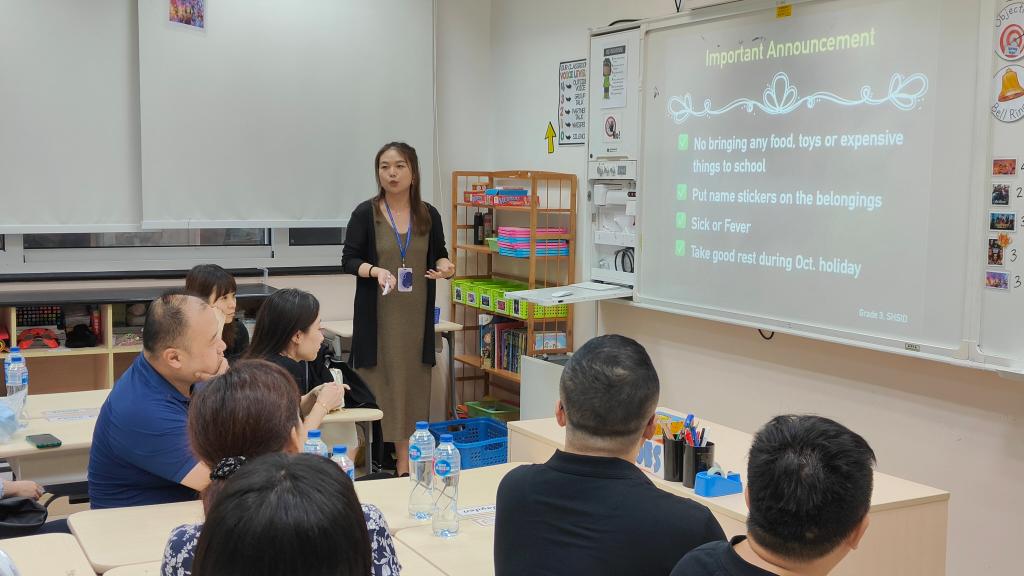
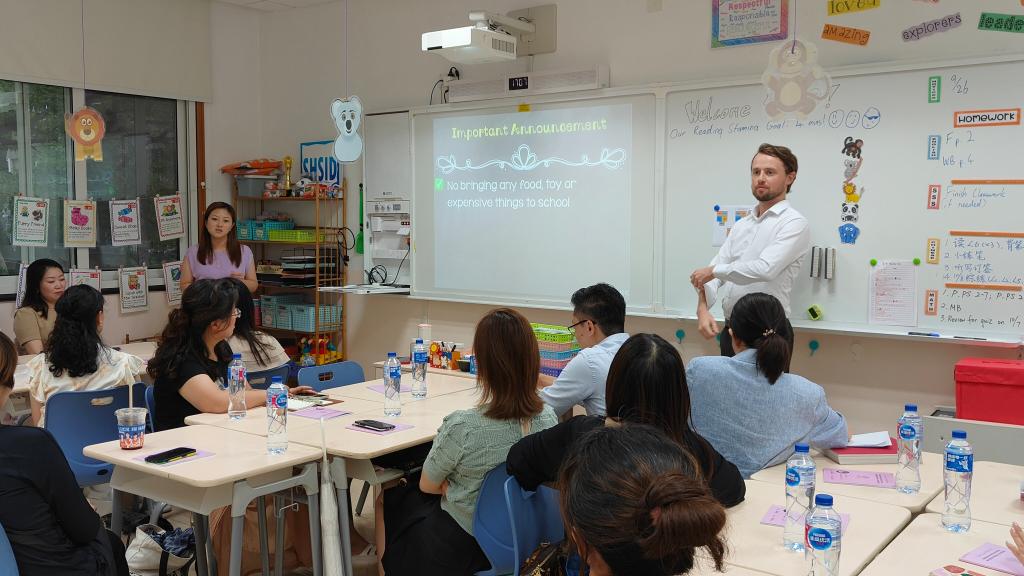
This parent-teacher meeting was like a timely rain. Through this communication, parents felt the love and sense of responsibility from the school and every teacher toward their children. They gained a deeper and more comprehensive understanding of the school's educational philosophy and teaching methods. Let us work hand in hand, collaborate between home and school, and together create a loving and healthy environment for our children to grow into independent and self-reliant learners.
(Written by Thea Chen, Jingyuan Zhang, Yu Lin
Pictures by Carol Li
Edited by Serene Yang, Ginger Xu, Cong Luo, Wu Shiyu (Intern), Darragh Mahon)